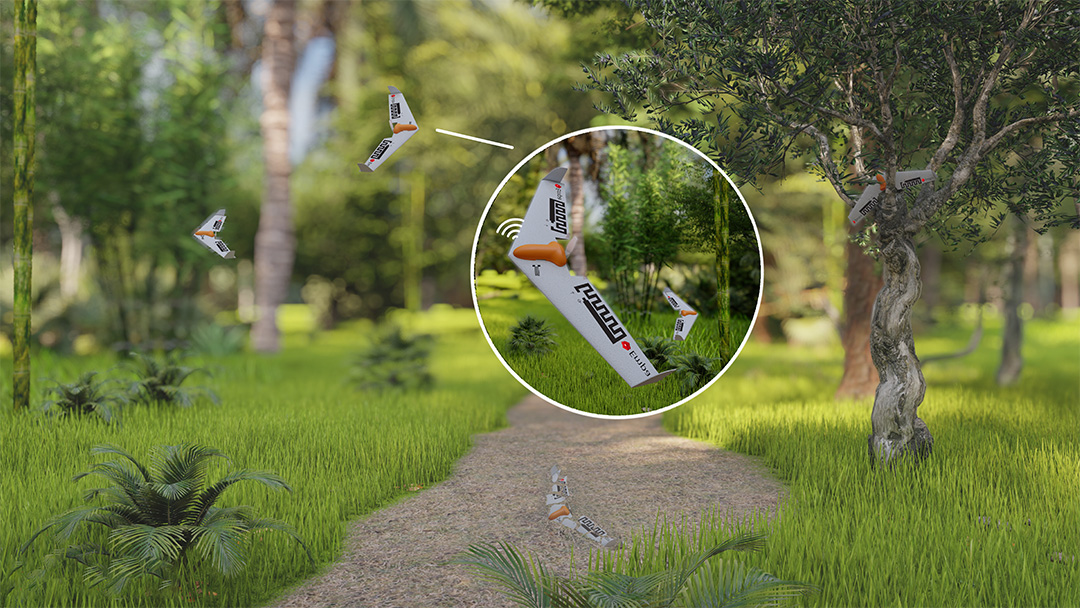As we continue to investigate the impact climate change has on the environment, the boom in robotics has made this task less expensive and labor intensive. Thanks, especially, to flying robots or drones, data can be collected in difficult-to-access regions or ecosystems that may be easily disturbed by teams of scientists arriving for in situ investigations.
These include natural forests, which are one of the world’s largest carbon sinks, and thus important in reducing carbon dioxide, a major greenhouse gas and driver of climate change.
There are still limitations to the use of high-level intelligent drones for environmental monitoring purposes, however. At least some parts of these robots must be made from silicon-based electronics, and that requires sections of the drone to be recollected following a malfunction or loss of control. Additionally, drone malfunction can result in harmful, non-degradable materials being deposited in vulnerable ecosystems, threatening a delicate balance.
A biodegradable flying machine
A new paper published in the journal Advanced Intelligent Systems proposes a transient flying robot that consists mainly of biodegradable and bio-sourced materials.
“In this specific example, the structure, as well as the printed environmental sensors, are fully degradable. Most of the drone’s components can be left in the environment targeted for monitoring, and one-way missions are enabled,” said Fabian Wiesemüller from the Laboratory of Sustainability Robotics, Empa — Swiss Federal Laboratories for Materials Science and Technology, who led the study with colleague Mirko Kovac. “Furthermore, the bio-based materials used generally have a smaller environmental footprint and make the device more sustainable.”
The flying drone can be released to collect and report back data from natural forests and then once its mission is complete, or in the event of a malfunction, it can land on the forest floor where it decays harmlessly. This is because the “ingredients” of the drone are simple starch, agar, and gelatin mixed with some wood waste.
Wiesemüller and Kovac’s team from the Sustainability Robotics Lab intend to use the data from the smart drones to monitor the condition of forests and their biological and chemical balance.
A palm-sized glider
The drone has a roughly 420 mm wingspan and is a tail-less flying wing, with one rear-facing propeller that resembles a palm-sized glider. What is really exciting about this flying machine is the fact its wings are made of conventional potato starch or agar that is combined with finely ground cellulose from wood waste.
The components are mixed and then freeze-dried, which turns them into a stiff but lightweight foam that can be molded into a wing shape. To reinforce the wing, an ultra-low roughness electronics paper was bonded to the wing’s core.
“While cellulose is the most abundant polymer on Earth, its mechanical properties and inherent sustainability make it an ideal candidate for the design of transient robots,” Wiesemüller said. “By mixing it with the other three biopolymers, lightweight bio-based and fully biodegradable high-porosity foams were developed.
“After the mechanical analysis of various compositions, it was found that cellulose and gelatin feature the best properties, maximizing the specific stiffness and specific strength,” he continued.
To this structure, the team attached a sensorized skin made from carbon black sensors ink jet printed on cellulose according to Wiesemüller, with this component also being biodegradable.
“A commercial desktop ink-jet printer was used with a carbon-black based ink. The ink was deposited on low-roughness electronics paper and the samples were dried using a heated pad,” the scientists continued. “The resulting printed sensors are low-cost, and their design can be changed quickly due to the flexible manufacturing approach.”
Thus far, only one section of the drone doesn’t decay to the forest floor, but the scientists have ensured this element will do as little environmental harm as possible.
“The fuselage section carries an electronics box, which holds the non-degradable components, such as the data link and flight controller, and acts as a crash box reducing the risk of contaminating the environment,” Wiesemüller pointed out.
How does the decaying drone perform?
The team behind the drone said that once it lands on the forest floor at the end of service life, a “race against time” begins. As the sensorized skin of the machine measures the temperature, nature gets to work on decaying it.
When the team tested the drone in lab conditions, they found that soil organisms decomposed most of the wings after only 14 days. The sensing skin began to fall apart a further two weeks after this, with the decomposition process allowing the components of the drone to make their way back to nature. This just leaves behind the traditional electronic components in their housing like a black box used by airliners that needs to be recollected at a later stage.
The team’s drone has already made several test flights during which it was manually piloted and demonstrated its flight stability, achieving continuous data streaming of the incorporated sensors. Wiesemüller added that the flying wing had high agility and could sustain flight for as long as 15 minutes.
The future of the drone includes an upgrade to its sensing capabilities with the team pointing out that the temperature sensor used by the drone is simply an initial proof-of-concept device that will be upgraded by sensors that can also determine the condition of trees, water, and soil in real-time across the forest landing zone.
“In the next step, we want to incorporate other transient sensors, that can provide more information on the environment. This includes indicators such as relative humidity, UV intensity as well as pollutant levels,” Wiesemüller concluded. “Furthermore, we are working towards substituting more and more non-degradable components such as the battery with transient electronic components.”
References: F. Wiesemüller, et al, Biopolymer Cryogels for Transient Ecology-Drones, Advanced Intelligent Systems, DOI: 10.1002/aisy.202300037
Feature image credit: Yusuf Furkan Kaya

















